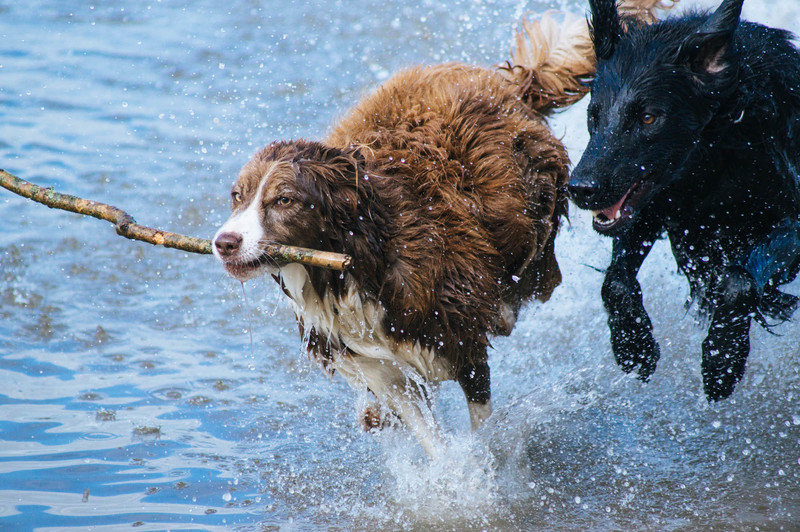Last week, we started a new series of BrandStruck blog posts, taking a look at some of the most fascinating brand wars. In business, big brands always have direct rivals and therefore need to differentiate marketing activities to get their products to different sections of the market. They can take each other on through anything from pricing and product offer, to distribution and marketing communication.
In our last post, we investigated the battles between Microsoft and Google, Nike and Adidas, and Coca-Cola and Pepsi. Now we delve into some more big brand wars, this time in the fields of whiskey, baby care and shaving.
1. Jack Daniel’s vs Johnnie Walker
Jack Daniel’s and Johnnie Walker are the world’s two leading brands of whiskey. While Johnnie Walker is a scotch whisky, Jack Daniel’s meets the criteria to be classified as bourbon but it is marketed as Tennessee whiskey. Despite these differences, for many people their key products seem to be similar, but they are both positioned differently.
In communication, both brands emphasise heritage and the unique production process, so what mostly differentiates them, is their brand character. Jack Daniel’s represents the Regular Guy archetype. It is a down-to-earth, humble brand which doesn’t take itself too seriously. It focuses on where it comes from – Lynchburg, Tennessee and all its brand stories revolve around the people of Lynchburg.
Johnnie Walker, on the other hand, is much more cosmopolitan. While Jack Daniel’s is about where it comes from, Johnnie Walker is about where it goes to. Making personal progress has lain at the heart of the Johnnie Walker’s communication for some time now. However, a new, lighter angle has been added to it recently – joy as a major factor contributing to progress (“Joy conquers, reinvents, changes the world”). It adds a bit of the Jester archetype to its brand make up, but is still primarily an Explorer brand, with communication talking about the global presence and how it’s grown from Scotland to the world.
2. Pampers vs Huggies
Pampers and Huggies are key competitors in the baby care field. Both have similar products but target different segments of the market. Pampers on the functional level is about providing comfort for babies thanks to innovative product solutions. On the emotional one, its brand strategy revolves around caring for babies’ happy, healthy development and seeing the world through a baby’s eyes. It builds a very strong emotional benefit of peace of mind for baby’s caregivers.
It’s through this method that Pampers aims the brand at first time parents who may be more stressed and worried about their baby, therefore needing the right products to ensure their child’s comfort and safety. Huggies, on the contrary, targets the other part of the baby care market – more experienced and relaxed parents. The Huggies products are in general less expensive than Pampers so it’s easier for the brand to convince second time parents as they feel less guilty for buying something cheaper for their baby.
3. Gillette vs Wilkinson Sword
Gillette’s brand strategy is all about being the best, whether it’s talking about itself or its consumers. It constantly reinvents itself by upgrading its shaving technology, making this the focal point of the brand’s advertising. Gillette builds a powerful, masculine image, typical for the Ruler archetype by employing strong, authoritative language.
Wilkinson Sword (Schick in the US) plays it differently though, focusing more on the emotional side of communication. Self-discovery, Self-expression and authenticity are their key themes, coming across in a warmer, less authoritative style that differs them from Gillette.
It’s difficult to find a brand that is completely unique in what it offers – there’ll always be some distinct elements, but overall, every category has many competitors offering similar products. It’s easy for these competitors to do the same thing when it comes to brand strategy, but that wouldn’t benefit anyone. There need to be strong differences between competing brands to ensure they stand out and help the consumer to feel they have a good varied range of choices.
If you need help with research or want to hire Magda for a brand project, email her at magda@brandstruck.co
To subscribe to our newsletter, simply email your address to brandstruck@brandstruck.co with the subject line ‘Newsletter’.
Magda Adamska is the founder of BrandStruck.
https://www.linkedin.com/in/magda-adamska-32379048/
BrandStruck is the only online database of brand strategy case studies.
BrandStruck’s mission is to empower brand builders worldwide with the best brand strategy practices and insights, showcased through 250+ case studies of the world’s most admired brands.
